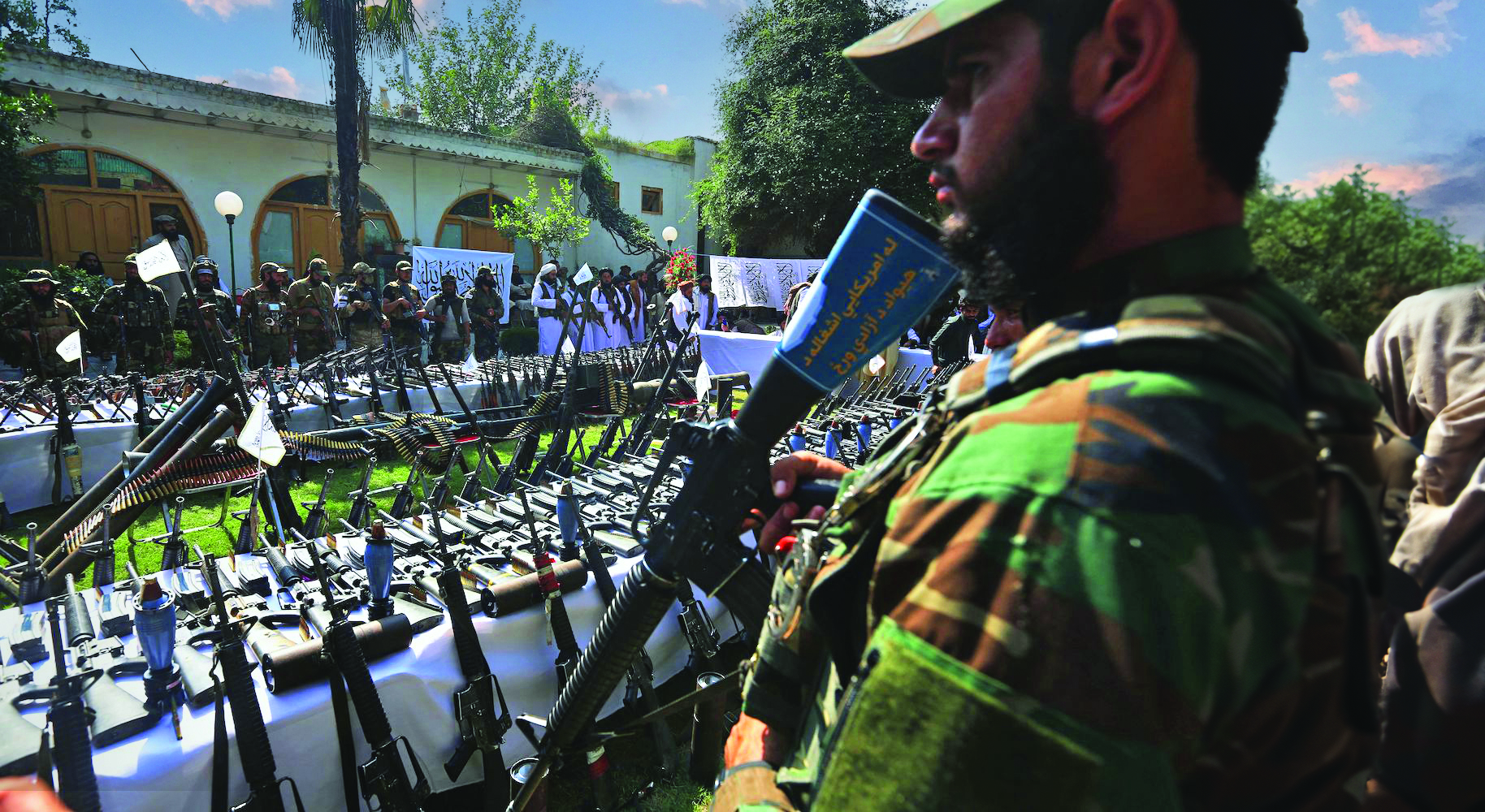The following study aims to document and analyze the most significant approaches to preventing arms diversion, with the ultimate goal of arming allies without risking the arming of adversaries. This objective, while challenging, stands as one of the most critical challenges faced by governments and the international community today, particularly in the intricate and interconnected conflict environments of our world. Weapons can easily fall into the hands of governments or armed groups whose interests conflict with those of the weapon-manufacturing or transporting state.

In the literature related to studies on preventing arms diversion, several key points are universally acknowledged:
1 Any concept of “arms diversion” should encompass:
a. Redirecting the actual transportation of authorized weapons from an intended user to an unauthorized one.
b. Making the transfer insecure during delivery or afterwards, intentionally or negligently leading to the unauthorized seizure of weapons.
c. Illegitimate exchange of weapons for power, money, trade, gifts, benefits, or any other service.
2 ”Preventing arms diversion” is commonly defined as stopping the illegal trade of weapons, eradicating it, and preventing the redirection of weapons to the illicit market or unauthorized final use and end users, including committing terrorist acts.
3 Weapons diversion and illegal trade are among the most significant factors undermining societal stability. They escalate instances of peace and security compromise, pushing certain societies and states into a vicious cycle of violence and insecurity. Thus, the shared global responsibility demands solutions covering all stages of the arms and ammunition lifecycle, from production to final usage, to prevent the diversion of arms through illicit trade to non-state armed groups, criminals, and terrorist entities.
4 Among the diverted weapons, illicit accumulation and transfer of small arms and light weapons, and their misuse, stand as crucial factors fueling armed conflicts, crimes, their perpetuation, and exacerbation in various regions worldwide. Izumi Nakamitsu, United Nations Under-Secretary-General and High Representative for Disarmament Affairs pointed out that there are an estimated one billion small arms in circulation globally, which are used in deadly violence both in conflict and non-conflict situations. This phenomenon is widespread across regions from the Americas to Africa to Southern Europe.
5 The direct effects of arms diversion are deaths, injuries, displacement, and psychological harm. Indirect effects include long-term social and economic consequences, such as the inability to access health and education services, as well as humanitarian aid.
6 Arms diversion is a dynamic and multifaceted trade. As gaps and loopholes are closed, actors in this trade exploit other vulnerabilities. Consequently, the international community faces numerous challenges in its efforts to prevent arms diversion and illegal trade.
Objectives
The following study aims to document and analyze the most significant approaches to preventing arms diversion, with the ultimate goal of arming allies without risking the arming of adversaries. This objective, while challenging, stands as one of the most critical challenges faced by governments and the international community today, particularly in the intricate and interconnected conflict environments of our world.
Weapons can easily fall into the hands of governments or armed groups whose interests conflict with those of the weapon-manufacturing or transporting state. This can occur through various means:
1 Seizure by an enemy during armed conflict.
2 Acquisition after a change in the allied or friendly government.
3 Confiscation following the withdrawal of weapon-manufacturing or allied forces from battlegrounds or previously controlled territories.
Such dynamics contribute to intense regional and international instability, sustain armed conflicts, and hinder post-conflict reconstruction and development.

Key Approaches to Preventing Arms Diversion
Full Control over the Transfer Process: All categories of arms imports and exports are part of a chain of transportation and re-transportation processes, commencing with the manufacturer and concluding with the delivery of the transferred arms to what is referred to as the “end-user.” Additionally, arms can be retransferred through re-export to new end-users.
Arms diversion in the transfer process can occur when weapons are lost, stolen, or intentionally retransferred to an unofficial recipient for unauthorized possession and use.
Furthermore, it can happen when the importer violates end-use agreements. As illustrated in the following diagram, arms diversion in the transfer process can occur at multiple stages, starting from the country of origin or factory (departure point), during transportation to the intended end-user, at the time of delivery to the declared recipient, or after, whether from weapon depots or conflict areas.
Patterns of Arms Diversion
The exporting states bear the primary responsibility for preventing arms diversion, thus they should:
• Conduct comprehensive risk assessments in the short, medium, and long terms by exploring all scenarios of arms diversion and studying whether and how to mitigate the identified risks.
• Exercise due diligence in verifying the end-user.
• Ensure safe transportation at all stages.
On the other hand, importion and transition states should:
• Develop or maintain effective systems for monitoring arms transfers to ensure the strict application of arms diversion prevention laws.
• Register all weapons under their jurisdiction and record them.
• Fully cooperate with requests for searches for missing weapons.
Moreover, the collaboration between exporters, importers, and transporters within what can be termed “comprehensive collaborative control” is crucial. This is to ensure secure delivery and minimize diversion risks, representing a significant step in enhancing arms transfer security and preventing diversion.
Addressing Corruption and Administrative Inefficiency in Regulatory Authorities: One of the most common methods employed by arms traders involves complicity among administrative staff or exploiting their incompetence, including:
1 Forging shipping documents, including product descriptions and personal information about the sender and recipient.
2 Underestimating the value of illicit shipments of small arms to reduce customs scrutiny.
3 Employing indirect routes and multiple shipping points to conceal the destination of illegal shipments to specific countries.
4 Altering or obfuscating serial numbers and other identification marks on weapons and ammunition.
5 Disassembling weapons and placing incorrect labels on storage containers, concealing weapons within or behind household goods, construction materials, and machinery.
6 Using dummy companies and nominal buyers to mask the identities of smugglers and their links to unauthorized shipments.
Governing and Restraining Arms Transfers During Conflicts: Arms transfer operations during conflicts pose complex risks. These include the danger of an enemy seizing weapons intended to aid an ally, arms falling into the hands of unexpected parties after a change in government in conflict areas, and the risk of abandoning weapons during troop withdrawal from conflict zones, leaving them as spoils for the enemy. According to arms control expert and Deputy Director of Stimson’s Washington office, Rachel Stohl, “It’s impossible to know not only where weapons go and who uses them, but also how they’re used. In the context of war, it’s an illusion to think that someone can fully control the trajectory of arms.”
The events in Syria after 2011 provide a stark example. For instance, the American group SITE Intelligence revealed a video clip disseminated by ISIS, showing American weapons and parachuted supplies intended for Kurdish People’s Protection Units (YPG), falling into the ISIS hands.
The rise of the Taliban, now in control of Afghanistan, is another clear example of the risks posed by arms sales in conflict areas. The Taliban now control the military arsenal left by the previous government.
The lesson learned from this is that arms transfer operations may enhance the military strength of the current allied government but could also bolster the potential future adversary’s military power.
Exporting states hold the responsibility to consider the strategic risks associated with transferring arms to conflict areas and assess the risks of arms diversion with more mechanisms for governing and restricting arms transfers during conflicts.
Enhanced Security during Weapon Use: Weapons and ammunition are often diverted from stockpiles under the control of defence and security forces due to weak monitoring measures, making them vulnerable to theft and seizure.
Moreover, arms diversion can occur through attacks on equipment transport convoys and security personnel carrying weapons during their service.
Arms diversion affects all national forces and security units, including those operating abroad in the context of United Nations peacekeeping operations. Between 2004 and 2014, at least 35 incidents of arms and ammunition diversion occurred, resulting in the loss of 750 weapons and 1.2 million rounds of ammunition due to attacks on convoys and fixed military sites.
Notable documented cases include incidents in Sudan and South Sudan, where over 500 weapons and more than 750,000 rounds of ammunition were lost. These materials include pistols, rifles, machine guns, grenade launchers, anti-tank weapons, and mortar shells, in addition to the associated ammunition.
Therefore, ensuring enhanced security during the official international, regional, or local use of weapons has become essential to curb arms diversion.

Curbing the Illicit Arms Trade: In addition to diverting legitimately manufactured firearms and weapons through illegal means, the illicit arms trade represents another source of unauthorized arms flows in conflict areas. In fact, weapons and ammunition that were manufactured and diverted decades ago continue to be illegally circulated. Small-calibre ammunition produced during the Cold War remains widely prevalent in conflict areas. Since 2010, 560 types of such ammunition have been documented across seven conflict zones in Africa and Syria. More than half of the documented ammunition was produced before 1990.
Consistent Implementation of National Laws, Regulations, Regional Agreements, and Relevant International Commitments: National laws, regulations, regional agreements, and relevant international commitments have agreed upon the obligations specified in Article 11 (1) of the Arms Trade Treaty, which came into effect in December 2014 to regulate the trade in arms from small arms to combat tanks, fighter aircraft, and warships.
The obligations and measures that countries should take to prevent arms diversion include:
1 Commitment to preventing arms transfer diversion.
2 Commitment to risk assessment and implementing countermeasures and preventive actions.
3 Commitment to disclosing and enforcing arms diversion prevention measures.
4 Commitment to information exchange and cooperation to take effective measures.
Efforts to prevent and combat arms diversion start with the faithful and consistent implementation of national laws, regulations, regional agreements, and relevant international commitments by all countries.
Active Role of Civil Society: Civilian society can play a pivotal role in preventing arms diversion. A prime example of this is the Argentine “Armas bajo Control” (Arms Under Control) alliance, which comprises 150 civil society organizations established to monitor the implementation of the Arms Trade Treaty.
International Cooperation: The problem of arms diversion cannot be effectively solved or mitigated by individual states alone. Disrupting illicit arms trade networks requires international cooperation, including information sharing, knowledge transfer, and providing technical and financial assistance to enhance the capacities of resource-constrained countries, institutions, and other relevant entities in controlling weapon stockpiles and monitoring borders.
International cooperation also ensures coordinated efforts to intercept arms diversion operations and impose sanctions on illegal arms trafficking syndicates.
Collaboration with universities and research centres in training and producing balanced studies and knowledge-based maps: Collaboration with universities and research centres to produce balanced studies and knowledge-based maps can contribute to curtailing arms diversion.
Maps of networks involved in corruption, international smuggling routes, illicit brokers, methods of arms diversion, delivery points, and the interfaces utilized by groups participating in arms diversion processes can all contribute to generating balanced knowledge that mitigates arms diversion.
Additionally, training and expertise exchange through university, research, or international institutes, such as the United Nations Institute for Disarmament Research, which offered training courses between 2015 and 2020, exemplifies the desired cooperation in conducting assessments of arms and ammunition control for institutions in 11 countries.
Utilizing New Technologies: New technologies, such as self-destruct devices, can minimize the risks of unauthorized weapon use. However, these technologies require ongoing research and development. Therefore, substantial research funding and collaboration with military and civilian technology companies are necessary to develop innovative technologies aimed at preventing arms diversion.
Conclusion
Despite the legal frameworks governing states’ control over arms transfers, the vast majority of arms diverted in the black market were initially manufactured and owned legally before being transferred to unauthorized recipients.
Furthermore, there are cases of homemade and altered weapons, however, such weapons are often assembled from legally acquired components.
In the context of the Russian-Ukrainian conflict (where Western countries and NATO allies are arming Ukraine), the international community must ensure more than ever (given the vulnerabilities in arms transfers to Ukraine) that arms diversion is prevented.
Jürgen Stock, the Secretary-General of INTERPOL, warned that the conflict in Ukraine could lead to a proliferation of weapons on the black market.
Therefore, the international community must develop stricter oversight mechanisms for arms supplies to Ukraine and other countries. This can be achieved through the development of innovative forms of tracking and detailed inventory systems for the supplied weapons.
Such systems would establish an international regime for arms monitoring, using non-traditional methods that align with evolving and diverse conflict environments.
In conclusion, despite all political and legislative attempts to prevent arms diversion, the transfer of weapons still entails unavoidable risks. Weapon manufacturers and carriers cannot guarantee that their weapons will never end up in the hands of illicit forces.
New technologies can reduce arms diversion, but this is a field that requires further research, development, and integration into relevant legislation to ensure tracking without surveillance.
By: Prof. Wael Saleh (Expert at Trends Research & Advisory)













